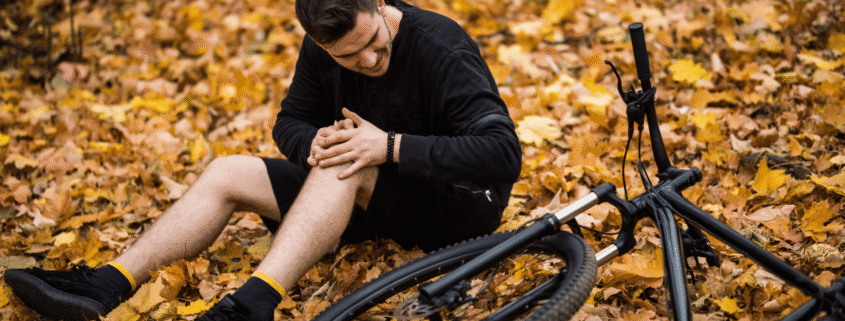Utah Bicycle Accident Types Explained: Safety, Injuries, and Legal Help
Most bike crashes happen when drivers and riders miss each other. Get checked by a doctor, photograph the scene, keep bills and names, and talk with a bicycle accident attorney Utah early so someone handles the paperwork while you rest and heal quickly.
If you ride a bike in Utah, you know how steady and calm a good ride can feel. An accident, though, changes everything in a few seconds – pain, phone calls, questions from police, and insurance forms.
Here, you will find a blog that cuts through the noise.
We will show the common crash types we see, why they happen, how injuries usually show up, and the steps most people wish they had taken at the scene. We also explain a few Utah rules that matter when you talk to police or an adjuster.
Take this checklist with you and save it to your phone.
Key Information:
- Most serious crashes involve a motor vehicle.
- Utah law asks drivers to give three feet.
- See a doctor even for mild pain.
- Take photographs and preserve clothing.
- Make a police report and retain a copy.
- Talk to an attorney before recorded statements.
Common types of bicycle accidents
Most crashes fit into a few patterns. It will make your description to the police and doctor clearer.
- First, many car-bicycle collisions happen at intersections. Or when a car crosses a bike lane. Drivers and riders misread speed and gap; that’s when a minor mistake becomes a broken bone.
- Second, dooring happens when someone opens a parked car door into your path. It looks small but can throw you into traffic.
- Third, passing crashes occur when a car squeezes by too close. On city streets, drivers sometimes treat the curb lane like extra parking, and a close pass knocks a rider off balance.
- Fourth, left-hook and right-hook collisions happen when turning cars cut off riders going straight.
When you report a crash, say which pattern fits and where you were riding. Saying “driver turned into me as I rode straight through the intersection” tells more than “I was hit.” Photos and a short, plain written note you add to your phone right away help later.
10 common bicycle accident causes you will actually see
Here are the repeated mistakes that lead to most crashes. They come up again and again in real cases.
- The driver failed to see a rider at an intersection.
- Driver passed too close behind or beside the rider.
- Driver or passenger opened a door into the bike lane.
- The driver made a quick turn without looking.
- Distracted driving, usually a phone or screen.
- Riding after dark without proper lights or reflectors.
- High speed in mixed traffic areas.
- Rider surprised by a car pulling out of a driveway.
- Inexperience in traffic during busy hours.
These causes usually combine. If a driver broke a specific rule, like failing to leave three feet when passing, that detail helps your claim. Keep the names of witnesses and take clear photos of the car, damage, and exact road where the fall happened.
Typical injuries and getting the right care
Injury patterns repeat, and early care matters for both your health and any claim.
Head injuries are common. You might think you are fine, but a concussion can show up hours or days later as headaches, sleep trouble, or fogginess. If you hit your head at all, see a provider who knows concussion checks.
Broken bones often affect the collarbone, wrist, and arm; people brace themselves and land on a hand. It is important to clean and document road rash and deep scrapes. There can be serious problems associated with infections if they are left untreated. Back and neck pain after a crash needs careful tracking.
In most cases, muscle strains mask more serious disk or ligament problems. If you experience sudden abdominal pain, dizziness, or fainting, you should immediately go to the emergency room. It is rare for internal injuries to be life-threatening. But they can still occur.
You should make a simple file after you receive treatment: the date and clinic name of each visit, the scans and tests names, and the receipts. Take photos of injuries right away and again after a few days so the healing path is visible. That paper trail connects the crash moment to the treatment you received, which is useful at home and if you later talk with an insurer or a lawyer.
What to do at the scene and in the days after?
Here’s a checklist people should keep in their pocket.
Once you arrive at the scene, get to safety and call the police if anyone is harmed. Photograph the whole scene. It will include every vehicle, its license plate, any skid marks, and any road hazards such as potholes or debris. Contact the witness by phone to get their name and phone number. If police come, give a short, calm statement and request the report number.
Right after: see a doctor even if pain is mild. Some problems are delayed. Save all medical forms, scans, and bills. Do not dispose of the bike until a lawyer or adjuster inspects it and photographs it.
Keep a note of any memories you have regarding the crash. Weather, car movement, and words the driver used were all factors. That short note helps memory fade less.
When insurance calls: do not give long recorded statements or sign any release without checking with a lawyer. Ask for the adjuster’s name and end the call politely. If expenses rise or fault is disputed, consult a bicycle accident attorney Utah to know your rights and deadlines.
Find the right Utah bicycle accident attorney
When bills stack up or the fault is unclear, a lawyer takes the paperwork off your plate so you can focus on getting better.
Start with specific questions: how many bike cases have you handled recently? How are fees handled? If you see a lawyer who gives clear answers and says who will call your doctor and who will talk to the insurer, that matters more than fancy promises. Many injury firms work on a contingency basis, meaning they take a portion only if you recover money.
If you want local help, Cockayne Law represents injured cyclists across Utah and offers a free case review. Chris Cockayne handles injury claims and focuses on taking stress off the client while the team gathers police reports, medical records, and witness statements. That sort of local experience can speed up settlements and keep hospital bills from piling up while you heal.
When you meet a lawyer, bring photos, the police report number, and medical records you have so far. A short, honest chat will show whether the lawyer understands bike cases and how they plan to protect your recovery. If they push you to accept a quick low offer, step back and ask for time to review with a second opinion.
Final thoughts
A crash upends your day, but your next moves matter most. Get medical care first, then document what you can. Short notes and photos taken at the scene tell a clearer story than long memories later. Keep every bill and scan. If insurance pushes a quick payout or questions fault, get a lawyer’s view before you sign anything. A Utah bicycle accident attorney can assist you with hospital bills, speak with insurers, and keep your claim on track while you heal.
FAQs
What is the best time to see a doctor after a crash?
Even mild pain deserves a check the same day or within 24 to 48 hours. Some injuries like concussion or internal bruising show late. Early records link treatment to the crash and help with any later claim.
Do drivers have to give me space when passing?
Yes. Utah law describes drivers must not pass within three feet of a moving bicycle. That rule helps show fault if a close pass causes a crash.
What if the driver had no insurance?
If the other driver has no coverage, your uninsured motorist coverage may help. A lawyer can review both policies and suggest the best path to cover medical bills and losses.
Can I get lost wages paid?
Yes, if another party is at fault you can seek compensation for lost earnings. Keep employer notes, pay stubs, and doctor notes showing time off.
How many times should I mention legal help?
Talk to a lawyer once you have initial medical care and scene photos saved. Early contact protects deadlines and lets a lawyer handle insurer calls while you heal.









